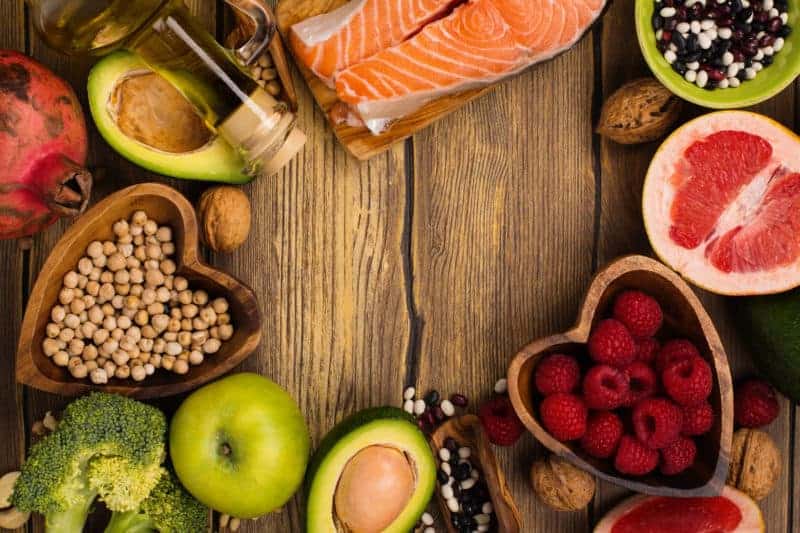Today the word “diet” carries the connotation that you’re restricting your food in some way, but Paleo nutrition doesn’t feel as though you’re dieting at all. This is because Paleo-style eating is really returning to a nutrient-dense way of eating. Paleo meals are packed with nutrition and leave you feeling satiated.
When you’re on a Paleo food plan, you’re eating in one of the healthiest ways possible for your body. The Paleo approach is backed by biology and biochemistry to include the best foods for a healthy life, while ridding you of the worst offenders in the modern diet.
I recommend Paleo eating to my patients because I’ve seen how it positively impacts not only how they feel, but their biomarkers and laboratory tests as well.
One study even allowed patients to eat as much as they want as long as it fell within the parameters of the Paleo diet, and found it had a positive impact on their overall health. After five weeks, those on the Paleo diet saw reduction in their waist/hip ratio, abdominal circumference, improved blood pressure, blood sugar, triglycerides, and inflammatory markers.
I’ve seen first-hand the positive impact of Paleo eating on autoimmune disease, pain conditions, diabetes, and cardiovascular disease.
Studies have found the Paleo diet improves insulin resistance, dyslipidemia (elevated cholesterol or fats in the blood), decreases hypertension, and reduces the risk of age related illnesses.
I’m excited to share with you that Paleo eating also carries the possibility of reversing Type 2 diabetes, a condition which has reached epidemic proportions in the United States.
Type 2 diabetes is on the rise
While Type 1 diabetes is technically an autoimmune disease, Type 2 usually develops later in life when your body becomes resistant to insulin. Usually the development of Type 2 diabetes is caused by poor dietary and lifestyle choices, which damages the body’s ability to process blood sugar and insulin properly, an insulin sensitivity problem.
Type 2 diabetes is on the rise in the United States, impacting about 30.3 million adults – one in four of which don’t even realize they have the condition. In fact, diabetes is now the seventh leading cause of death and rates have tripled over the last 20 years.
Complications of Type 2 diabetes
Type 2 diabetes causes a slow deleterious process on the body that can take years before it leads to death, which is why it sometimes feels as though there’s a serious lack of urgency in dealing with this disease.
But Type 2 diabetes is debilitating and dangerous. Type 2 diabetes also has serious side effects and increased risks, which include:
- Cancer risk
- Stroke risk
- Nerve damage
- Kidney damage
- Heart attack risk
- Infertility
- Depression
- Sexual dysfunction
- Dementia
- Alzheimer’s disease
Furthermore, chronically high insulin levels cause more than just Type 2 diabetes, it’s a precursor to nearly all age-related diseases.
A revolutionary 2011 study found lifestyle changes including a low-glycemic and nutrient dense diet reversed many diabetic indicators within one week and all factors within eight weeks. The pancreas’ beta cells (insulin producers) reactivated, fat deposits disappeared, and blood sugars normalized.
We know lifestyle and dietary changes can dramatically impact and even reverse Type 2 diabetes. The Paleo diet’s nutrient dense and low glycemic characteristics make it an excellent set of guidelines for reversing Type 2 diabetes.
How Paleo nutrition impacts Type 2 diabetes
Studies are showing us how the Paleo diet is great for balancing blood sugar levels and improving insulin response within the body, especially in overweight individuals.
One 2017 study examined 32 Type 2 diabetics on the Paleo diet over 12 weeks and found significant improvement in markers of metabolic health and insulin sensitivity. In fact, insulin function improved by an impressive 45 percent!
Furthermore, those on the Paleo diet had a significant improvement in HbA1c levels, which are a measure of blood sugar levels over a period of time (about 3 months) and a good indicator of blood sugar control.
These patients also each lost about 15 pounds and had improved leptin function. Leptin is known as the satiety hormone. The conclusion of this study found the Paleo diet improves glycemic control, insulin sensitivity, and leptin function in those with Type 2 diabetes.
This is good news if you’re prediabetic or have Type 2 diabetes, it means you have control over your disease and its progression. You can use Paleo nutrition (with exercise, good quality sleep, and stress management) to safely and successfully reverse Type 2 diabetes.
Study finds Paleo diet is better than American Diabetes Association diet
Interestingly, a study that compared the Paleo diet with the American Diabetes Association diet found surprising results.
The American Diabetes Association (ADA) developed a diet with the intention of helping those suffering from Type 2 diabetes to improve their insulin function and blood sugar control. The ADA diet advises moderate salt intake, low-fat dairy, whole grains, and legumes.
This study compared 24 individuals on each of the diets with the focus on how it impacted their insulin function and blood sugar control. The study found after two weeks, those on the Paleo diet experienced significant improvement in glucose control and insulin function, and those on the ADA diet had no improvements in insulin function.
The lack of improvement of the people on the ADA diet is likely because it’s high in carbohydrates, processed foods, and sugar.
Reverse your Type 2 diabetes with these 3 steps
Studies are showing it’s indeed possible to reverse your diabetes with lifestyle interventions. But first, I recommend you visit with your functional medicine doctor to work on a comprehensive treatment plan. You’ll need to have a series of tests to determine if you are prediabetic or where you are in your Type 2 diabetes development.
Because 90 percent of 84.1 million prediabetic adults are unaware of their condition, there’s a considerable chance you might be prediabetic. In fact, 50 percent of Americans are prediabetic. Prediabetes and Type 2 diabetes exist on a continuum, so it’s a good idea to have your blood glucose levels, and other biomarkers examined.
After you have baseline testing complete, you can begin the process of reversing your Type 2 diabetes with the following steps.
- Eat a low-carb Paleo diet. Especially ditch the carbs and sugar in the morning. Surprisingly, most of our breakfast foods are the worst possible thing you could put in your body first thing in the morning.
Avoid the sugary yogurt, fruit based smoothies, pancakes, waffles, cereal, bread, granola, and juices. Instead, opt for a high protein and fat breakfast items like eggs, avocado, veggies, and grass-fed butter. Smoothies are ok, as long as they have a good quality protein and fat in them, and are low in sugars, like this kale avocado smoothie bowl for example. Other ideas include making hashes with proteins and veggies, click here for my personal favorite.
Throughout the day, eat a low-glycemic diet high in lean animal protein, vegetables, and keep the sugar and carbs to a minimum.
- Exercise and Movement. You’re going to have to add movement if you hope to reverse your Type 2 diabetes. Getting 10,000 or more steps per day in is a great way to start! Then, adding exercise is the next step. The good news is, they don’t have to be extremely long workouts. Try 15-minute high-intensity interval training (HIIT) for a quick and effective option (of course make sure your doctor has cleared you for high intensity exercise before starting).
- Supplements. There are so many nutritional and herbal supplements that can help with insulin sensitivity. Knowing your key nutrient levels is an important place to start. For example, less than optimal levels of vitamin D and magnesium can impair blood glucose control. If you were unaware of those, and started taking an herbal supplement for example, it may not be as effective. Other nutraceuticals that can be great for diabetes include chromium, vitamin B1, alpha-lipoic acid, cinnamon, and berberine to name a few. However, I always recommend seeking expert advice before taking supplements.
If you’re suffering from Type 2 diabetes, the great news is there’s something you can do about it right now. You can take certain steps to take back your health and reverse your condition through the right lifestyle changes.
Share this article with someone you know who has Type 2 diabetes and let them know they have choices – it’s important we get the word out about this debilitating condition.
Resources:
http://www.healthline.com/nutrition/5-studies-on-the-paleo-diet#section3
https://www.ncbi.nlm.nih.gov/pubmed/23414424
https://www.ncbi.nlm.nih.gov/pubmed/19604407
https://www.ncbi.nlm.nih.gov/pubmed/26405708
https://www.cdc.gov/diabetes/basics/diabetes.html
https://www.ncbi.nlm.nih.gov/pubmed/11502781
https://www.ncbi.nlm.nih.gov/pmc/articles/PMC3168743/
https://www.ncbi.nlm.nih.gov/pubmed/27235022
https://www.ncbi.nlm.nih.gov/pubmed/25828624
http://jamanetwork.com/journals/jama/fullarticle/2434682
http://www.mayoclinic.org/diseases-conditions/diabetes/basics/complications/con-20033091










Thanks for sharing the valuable information .love to read this , i like this post.